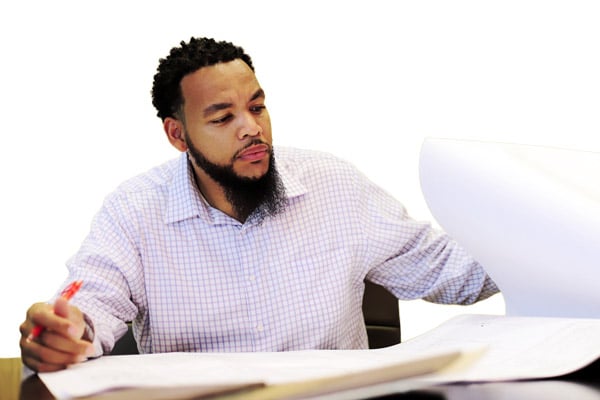
Will Smith comes to mind when David Hildebrandt looks back over his career. “He’s been a cowboy, he’s been a boxer, he’s been in space,” Hildebrandt says with a laugh. And while Hildebrandt might not be an astronaut or a bronco buster, the design and construction executive has built up quite the resume that has taught him the importance of reinventing yourself to face new challenges.
Growing up in Kansas City, Kansas, Hildebrandt didn’t have the advantages that many other children had. Other than one uncle, no one in his family had a college degree, let alone an architecture or design background. However, he had an innate interest in how things worked, tearing apart broken toys and asking questions about how the pipes worked or what was inside the walls. After finding that interest fulfilled in a drafting class in high school, Hildebrandt went on to graduate with a master’s degree in architecture and sustainable practice from Kansas State University.
“Suffice it to say, helping guide companies to architectural relevancy required a bit of personal evolution,” he says. “It took time, effort, vision, discipline, failure, and self-analysis.”
That self-analysis came in handy when it came time to develop his approach in his first leadership position. Hildebrandt was influenced by two of his uncles who had very different personalities. Both played a part in how he was raised, and together they made a big impact on his leadership style. One, he says, was the “hard” uncle: “He was very direct and had a very strong attitude, a manly man.” That uncle constantly pushed him to pull out every ounce of greatness within. The other uncle, by contrast, was very compassionate and supportive.
“What I realized as I got older was that I needed both,” Hildebrandt says. “I needed someone to push me even when I didn’t want to be pushed, and I also needed someone to support me and encourage me.”
Today, the fusion of those styles has helped him lead his teams to immense success. “I always push my team because I expect a lot out of them, but then at the same time, there’s a line where you also always have to encourage them and support them,” he says. Hildebrandt also credits his Christian background—and particularly the wisdom of Apostle Dr. Cornelius Sanders II—with teaching him how to lead effectively. “He taught me how a leader is supposed to act,” Hildebrandt says. “You have to expect the most, push people, and teach them, but you also have to serve them and treat them right—just caring for people, serving first, and being both supportive in the hard way and the soft way.”
In addition to developing a leadership style, Hildebrandt consistently redefined his own ideal working conditions. He found that he preferred a job in which he could lead while getting his hands dirty rather than delegating from behind a desk. “In architecture, often you’re just a draftsman, so you sit at a desk all day and do drawings, make phone calls, and file documents,” he says. “It’s okay as a job, but architecture doesn’t stop on paper. The point of architecture is to get something built in the real world.”
Hildebrandt’s ability to reinvent himself is especially important in architecture and design, an industry that functions on cycles and trends. “One of the most dangerous places that a person that graduates from design or architecture school can go to is to get stuck in the land of redundancy,” Hildebrandt says. “Depending on the firm or how you take your career, you could end up working on small projects restrained by budget, without any real design interest—projects where you have to do what’s quick and what’s cheap. If you get stuck in that realm for too long, you’ll eventually lose your design interest and learn to become more mechanized in your design.” For that reason, he has taken on big challenges with organizations that have let him grow and think outside the box.
Hildebrandt also taps into his understanding of the philosophy and psychology of architecture in his leadership roles. In fact, he first joined the architecture field because he found himself fascinated by the way that a thought could transfer onto paper and then be manifested into a physical space enjoyed by others. That thought must first be informed by the feelings and experiences of others. “Scientists will argue that no idea is original because it’s all based on our environment and experiences, while the ideas that we have in our head are largely formed by the spaces that we live in,” he says. “It’s this cycle that interests me.”
To drive the idea home, Hildebrandt thinks back through his many reinventions and all the way back to his childhood home in Kansas City. The house was 1,200 square feet, with three bedrooms, one bathroom, and a small eat-in kitchen. “In Kansas City, that’s pretty good space, and it was a cheap house,” he says. “But move that house into the context of San Francisco, and that house would be worth $300,000. The house would be the same, but it would yield very different things. Space influences behavior, and that influences space.” That cycle of influence and reinvention is clearly very important to Hildebrandt and one that drives his whole life. And he’s not done reinventing himself yet. “I’m pleased at the progress I’ve made,” he says, “but more inspired by the change which is to come.”
Photo: David Hildebrandt, Shaman Mitchell


